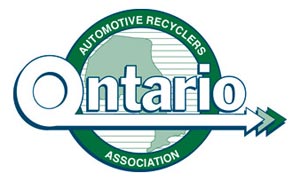The days when a car was automatically relegated to the junkyard at the end of its life are in the past.nnNowadays, an end-of-life vehicle, or ELV in industry parlance, doesn’t become waste in the traditional sense. Up to 80 per cent of the vehicle can be recycled or reused, sometimes at a profit.nn“ELVs have a positive recycled value, which means that incentives for collection and disposal are not necessary,” said Ken Hendricks, an industry relations adviser for the Automotive Retailers Association.nnLead-acid batteries, tires, metals, even oil, can be reused and recycled. Many parts can be salvaged and sold for a fraction of what they might cost new.nnBefore they end up at a steel-shredding facility, vehicles often have a second life in an auto-recycling operation, which buys the vehicles — at a fraction of their original cost — from owners or auction houses.nnSome of these shops are strictly “pick-and-pulls,” where the buyer selects the parts they want. Other shops lets the consumer “pull” the item from the vehicle themselves. Some recyclers are a combination of auto-dismantling and metal recycling facilities. Some only deal with late model or specialty vehicles (i.e. imports-only or Fords-only), while some may dismantle and inventory those parts they know they can sell quickly.nn“There are many parts on a car or truck that can be reused,” said Jim LeBrun, vice-chairman of the BC Auto-Recyclers Association. “Like a starter. Depending on the model, a used starter might be $40 or less. Were that same starter new or rebuilt, it could cost substantially more.”nnA new driver’s-door mirror that is heated and painted, and has a signal light, costs $1,800 new, he said. “A popular 2013 SUV has a rear-view mirror with a built-in back up camera display. It costs $1,100 new. A late model truck with the steps that come out of the tailgate run around $1,400 and up. This is where auto recyclers can save the buyer, who gets these parts at hundreds if not thousands of dollars in savings.”nnAnd, of course, the recyclers make a profit themselves.nnBy the time they reach an auto-recycling shop, the vehicles have been processed and drained of all hazardous materials. “De-polluting” a vehicle costs about $125.nnOther materials are less profitable than, say, new SUV parts, and hence are left to not-for-profit organizations. The British Columbia Used Oil Management Association, which is headquartered in Chilliwack, manages the recycling and collection of oil and antifreeze. Tire Stewardship BC collects and recycles tires.nnAccording to its website, in 2011 the oil management association collected 48 million litres of oil, which was “re-refined into new lubricating oil and processed for use in pulp mills, cement plants and in asphalt plants.” Oil filters are crushed and taken to a steel mill to manufacture reinforcing steel, while plastic oil and antifreeze containers are recycled into new oil containers, drainage tiles and parking curbs. Used antifreeze is recycled into new antifreeze.nnTire Stewardship collects an advance disposal fee, commonly referred to as an eco-fee, on the sale of every new tire. The fees are used to pay for transporting and recycling B.C.-generated scrap tires ensuring that the tires are disposed of in environmentally responsible ways instead of ending up in landfills.nnThe Lead-Acid Stewardship Program in B.C. manages used lead-acid car batteries. The price fluctuates according to the price of lead, but the average battery is worth $20 to $30, Hendricks said.nnOther products that can be reused or recycled include windshield-washer fluid and power-steering fluid.nnOnce the hazardous materials, recyclable fluids and salvageable parts have been removed, then metals, such as copper wire, and parts like catalytic converters are separated from plastics. The remains are crushed and fed to a shredder.nn“The shredder process further separates ferrous and non-ferrous materials,” Hendricks said. “These materials are sent to smelters to be made into new products.”nnThe remaining 20 per cent of each vehicle is currently non-recyclable in North America. That 20 per cent, known as auto shredder residue, includes non-recyclable plastics, cloth, glass and other materials and is sent to a landfill or incinerated.nnIn Europe, an ELV directive mandated that 95 per cent of a vehicle be recycled, starting next year. This has led to some innovations in post-shredder recovery of materials such as glass, cloth and plastics, Hendricks says.nn“I don’t think these innovations will be here anytime soon, but they will come. The biggest hurdle we face in North America is finding a market for the materials collected by the new technology. Also, the technology is very expensive and so there is no incentive for companies to invest in this technology.”nnThe European directive holds manufacturers responsible for the collection and disposal of their products.nn“That way, it is hoped that they will start designing their products with recycling in mind and using products that can be better reused and recycled.”nnFrom the Vancouver Sunnn
